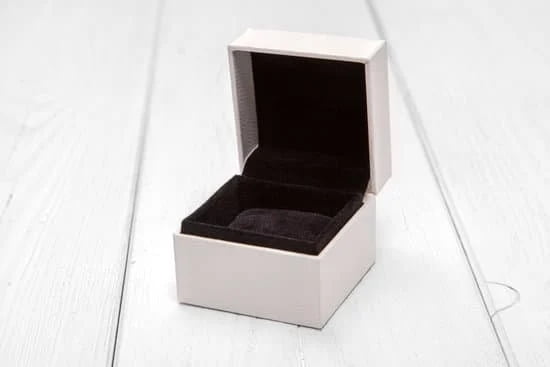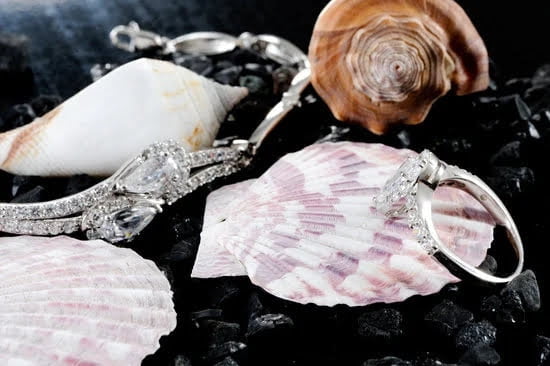Mother of Pearl has long been revered for its captivating beauty and elegant allure in the world of jewelry. Throughout history, this stunning natural material has been incorporated into various designs, adding a touch of timeless elegance to any piece. With its iridescent sheen and lustrous glow, Mother of Pearl has mesmerized cultures from ancient times to the modern era.
Understanding the origins and composition of Mother of Pearl only deepens our appreciation for its ethereal beauty. This organic gem is formed inside mollusks as a protective layer, created through a fascinating process that infuses it with captivating colors and patterns. With its unique composition, Mother of Pearl reflects light in a way that creates an ever-changing display of shimmering hues.
The rich history of Mother of Pearl in jewelry spans across ancient civilizations such as the Egyptians, Greeks, and Chinese. These early cultures utilized this precious material to symbolize spiritual significance and convey social status. As time went on, Mother of Pearl experienced resurgences in popularity during periods such as the Renaissance and Victorian eras. It became synonymous with opulence and was beloved by royalty and everyday individuals alike.
As we delve into the depths of Mother of Pearl’s role in jewelry throughout history, we uncover not only its influential presence but also its adaptability across different design movements. From Art Nouveau’s innovative use of naturalistic motifs to contemporary trends incorporating mixed metal designs, Mother of Pearl continues to captivate designers and consumers alike.
In this article, we will explore the historical journey of Mother of Pearl in jewelry-from ancient beginnings to modern applications-and discover why this remarkable gem remains a timeless treasure cherished by individuals around the world.
Understanding Mother of Pearl
Mother of Pearl, also known as nacre, is a captivating and cherished material that has been used in jewelry throughout history. Its iridescent beauty and unique composition make it a highly desirable addition to any piece of jewelry. In order to truly appreciate the allure of Mother of Pearl, it is important to understand its origins, formation process, and composition.
Origins and Formation
Mother of Pearl is formed within mollusks, such as oysters and abalone, as a protective coating for their delicate bodies. When an irritant or foreign object enters the mollusk’s shell, it secretes layers of aragonite crystals, which are interlaced with organic substances such as proteins. Over time, these layers build up to create the luminous and opalescent quality that Mother of Pearl is known for.
The actual formation process can take several years as the mollusk continuously adds layers to strengthen the shell. The thickness and quality of the resulting Mother of Pearl can vary depending on factors such as the species of mollusk and environmental conditions. This natural process gives each piece of Mother of Pearl its own unique characteristics and patterns.
Composition
Mother of Pearl consists mainly of calcium carbonate in the form of aragonite crystals. These crystals are arranged in layers parallel to the surface, which allows light to pass through and be reflected back in different colors. The organic substances within these layers contribute to its distinct luster.
The composition of Mother of Pearl makes it a durable material for jewelry making while still maintaining its delicate beauty. It is resistant to scratching and can withstand everyday wear. However, like any natural material, care should be taken to prevent exposure to harsh chemicals or extreme temperatures that could potentially damage or weaken it.
Understanding the origins, formation process, and composition of Mother of Pearl provides valuable insights into why this material has been treasured throughout history. Its ethereal beauty and unique qualities make it a timeless addition to any piece of jewelry. Whether it is in the form of a pendant, earrings, or a bracelet, Mother of Pearl continues to captivate and enchant wearers with its iridescent allure.
Ancient Beginnings
Throughout history, Mother of Pearl has held a significant role in jewelry, symbolizing various meanings and representing status and spirituality. In ancient civilizations such as Egypt, Greece, and China, Mother of Pearl was incorporated into jewelry designs to showcase its ethereal beauty and cultural significance.
Ancient Egyptians cherished Mother of Pearl for its association with creation and rebirth. It was often used in the creation of amulets, which were believed to provide protection and blessings to the wearer. The luminous quality of Mother of Pearl was particularly valued by the Egyptians, as it represented divine light and cosmic order. Additionally, it was frequently carved into intricate shapes like scarabs and lotus flowers, further emphasizing its connection to life and eternity.
In Greek mythology, pearls were considered tears shed by gods or nymphs. As a result, Mother of Pearl held great importance in Greek jewelry designs. It was commonly used in the creation of cameos that depicted mythical figures or scenes from ancient tales.
These cameos were seen as symbols of wealth and power and were often worn by the elite members of society. Greek artisans also recognized the iridescent nature of Mother of Pearl and used it to embellish sacred artifacts like statues and altars.
In ancient China, Mother of Pearl was highly revered for its association with purity and wisdom. It was frequently incorporated into decorative objects such as hairpins, combs, adornments for robes, and other accessories. According to Chinese folklore, wearing or carrying an ornament made from this enchanting material would bring good fortune and protect against evil spirits.
Overall, the use of Mother of Pearl in early civilizations showcases not only its intrinsic beauty but also the deep cultural significance associated with it. Its timeless elegance continues to captivate jewelry enthusiasts today.
| Ancient Civilizations | Significance | Jewelry Examples |
|---|---|---|
| Egypt | Represented creation, rebirth, and divine light | Amulets, carved scarabs and lotus flowers |
| Greece | Symbols of wealth and power | Cameos depicting mythical figures |
| China | Purity, wisdom, and protection against evil spirits | Hairpins, combs, and robe adornments |
Renaissance Fashion
The Renaissance period marked a significant resurgence of Mother of Pearl in European jewelry, as the appreciation for this stunning material was reignited. During this time, Mother of Pearl became a staple in fashion and jewelry, adorning the noble and regal alike.
One influential figure who played a pivotal role in popularizing Mother of Pearl accessories was Elizabeth I. Known for her love of pearls, she frequently incorporated them into her extravagant wardrobe. Elizabeth I often wore intricate necklaces, earrings, and brooches adorned with Mother of Pearl accents, showcasing its versatility and elegance.
Marie Antoinette also contributed to the resurgence of Mother of Pearl in European jewelry during the Renaissance era. As one of history’s most iconic fashion icons, Marie Antoinette had an immense influence on trends and styles. She advocated for delicate and feminine designs that included pearls and Mother of Pearl elements in elaborate hair ornaments and decorative pieces.
During this time period, artisans began incorporating Mother of Pearl into larger statement pieces such as chokers, tiaras, and pendants. The iridescence and natural beauty of the material appealed to the fashionable elite across Europe. The use of Mother of Pearl represented both luxury and sophistication, reflecting the opulence associated with the Renaissance period.
| Renaissance Fashion | European Jewelry |
|---|---|
| Elizabeth I | Mother of pearl accents |
| Marie Antoinette | Tiaras and hair ornaments |
| Larger statement pieces | Chokers, tiaras, and pendants |
Victorian Opulence
During the Victorian era, Mother of Pearl reached its peak in terms of popularity and opulence in jewelry design. This period, spanning from the mid-19th century to the early 20th century, was characterized by a love for extravagance, sentimentalism, and mourning rituals. Mother of Pearl perfectly embodied these ideals with its shimmering iridescence and delicate beauty.
Mother of Pearl in Cameos and Brooches
One of the most notable uses of Mother of Pearl during the Victorian era was in cameos and brooches. These pieces were often intricately carved with scenes or portraits, showcasing the craftsmanship and artistry associated with this period. The luminous quality of Mother of Pearl created a striking contrast against the darker backgrounds used to enhance its radiance.
Cameos crafted from Mother of Pearl became highly sought after as tokens of sentimentality during this time. Many individuals would commission personalized cameos that depicted loved ones or symbols that held special meaning to them. This added an emotional connection to the jewelry and made it a cherished heirloom passed down through generations.
Mourning Jewelry: A Symbolic Connection
Mourning rituals played a significant role in Victorian society, and Mother of Pearl was frequently incorporated into mourning jewelry. In this context, black onyx or jet would be combined with white Mother of Pearl, symbolizing the duality between life and death. These mourning pieces would often feature intricate designs such as flowers, angels, or urns as symbols of remembrance.
Lockets were also popular during this period, particularly those incorporating Mother of Pearl as a base for miniature portraits or compartments holding lockets containing a lock of hair from a deceased loved one. The ethereal nature of Mother of Pearl provided a serene backdrop for these sentimental keepsakes.
Art Nouveau
The Art Nouveau movement, which emerged in the late 19th century and flourished until the early 20th century, had a profound impact on the use of Mother of Pearl in modern jewelry design. This artistic movement was characterized by its emphasis on natural forms and motifs, seeking to challenge traditional designs and embrace innovation. Mother of Pearl perfectly embodied the organic beauty that Art Nouveau artists sought to capture, making it a highly sought-after material during this time.
One of the key ways in which Art Nouveau artists incorporated Mother of Pearl into their jewelry designs was through naturalistic motifs. Inspired by plant life, such as flowers and vines, these artists used the iridescent quality of Mother of Pearl to mimic the shimmering colors found in nature. Blades of grass, petals, and delicate leaves were meticulously carved from Mother of Pearl and set within intricate metalwork to create stunningly detailed pieces that celebrated the elegance of organic forms.
In addition to naturalistic motifs, Art Nouveau also embraced intricate engraved designs as a way to showcase the unique qualities of Mother of Pearl. Artists would delicately engrave patterns onto the surface of Mother of Pearl, creating mesmerizing textures that complemented the iridescence and luminescence of the material. These engraved designs often featured flowing lines, whiplash curves, and dynamic shapes that became synonymous with Art Nouveau style.
Overall, Art Nouveau played a crucial role in reintroducing Mother of Pearl into modern jewelry design. By embracing the ethereal beauty and unique qualities possessed by this natural material, Art Nouveau artists sparked a renewed appreciation for organic materials within the world of jewelry.
Today, we can still see traces of this influence in contemporary jewelry designs that incorporate Mother of Pearl in innovative and creative ways. Whether it is through naturalistic motifs or intricate engravings, Mother of Pearl continues to capture the essence of Art Nouveau and adds a touch of elegance and timelessness to modern jewelry.
Contemporary Applications
In recent years, Mother of Pearl has experienced a modern resurgence in the world of jewelry. Its versatility and enduring appeal have captivated contemporary designers and consumers alike. This section explores the current popularity of Mother of Pearl in the modern jewelry market, showcasing how it is incorporated into various designs and styles.
One of the reasons for Mother of Pearl’s continued relevance is its ability to add an element of elegance and sophistication to any piece of jewelry. Today, Mother of Pearl is often used in inlays, mosaics, and mixed metal designs, creating striking and unique pieces that stand out from the crowd. Whether it’s a delicate pendant, a statement ring, or a pair of earrings, Mother of Pearl can enhance any outfit or occasion with its ethereal beauty.
Contemporary trends have embraced the organic qualities of Mother of Pearl and have brought new innovative techniques to showcase its brilliance. Designers now experiment with combining Mother of Pearl with other precious gemstones or metals to create stunning contrasts and textures.
Its iridescent hues offer a harmonious blending effect when paired with diamonds or colored gemstones like amethysts or sapphires. Additionally, mixing Mother of Pearl with metals such as gold or silver adds a touch of contrast and modernity to traditional designs.
Furthermore, modern jewelers are exploring unconventional shapes and settings to capture the uniqueness of each piece of Mother of Pearl. From asymmetrical cuts to irregular shapes inspired by nature, these contemporary designs celebrate the natural allure found within this material. The creative possibilities with Mother of Pearl are endless, making it an exciting choice for both designers and those seeking statement jewelry with timeless appeal.
Caring for Mother of Pearl Jewelry
Mother of Pearl jewelry is not only stunning but also delicate, requiring special care to maintain its beauty and integrity. By following a few essential maintenance and preservation tips, you can ensure that your Mother of Pearl pieces remain radiant for years to come.
First and foremost, it is crucial to handle your Mother of Pearl jewelry with care. Avoid exposing it to harsh chemicals, such as perfumes, lotions, or household cleaning agents, as they can potentially tarnish or damage the delicate surface. It is best practice to put on your Mother of Pearl jewelry after applying any beauty products and continuously avoid contact with abrasive materials that can scratch its surface.
To clean Mother of Pearl jewelry, it is essential to use gentle methods. Start by wiping the piece with a soft cloth to remove any dirt or debris. If more thorough cleaning is needed, use a mild soap diluted in warm water and gently wipe the jewelry with a soft brush or cloth.
Following this step, rinse the piece with clean water and pat dry using a soft towel. Remember never to soak Mother of Pearl in water for extended periods or use ultrasonic cleaners as they can potentially cause irreparable damage.
When storing your Mother of Pearl jewelry, take precautions to prevent scratching or tangling. It is recommended to store each piece separately in a soft pouch or lined compartment within a jewelry box. As an added protective measure, consider placing a layer of tissue paper between the pearls to avoid contact and minimize potential damage.
With proper care, your Mother of Pearl jewelry will continue to radiate its iridescent beauty for generations to come. By following these maintenance and preservation tips, you can ensure the longevity and continued brilliance of these exquisite pieces.
Remember: caring for your Mother of Pearl collection not only preserves its intrinsic value but also allows you to enjoy its timeless elegance anytime you wear it.
Conclusion
Throughout history, Mother of Pearl has captivated the hearts of jewelry enthusiasts with its timeless beauty and elegance. From ancient civilizations to the modern era, this stunning natural material has held a significant place in jewelry design. Its iridescent glow and organic origins have made it a symbol of status, spirituality, and sentimentality. And despite changing fashion trends, Mother of Pearl continues to shine brightly in contemporary jewelry.
With its origins deeply rooted in nature, Mother of Pearl has fascinated civilizations for centuries. Its unique formation process within mollusks creates a mesmerizing display of colors and patterns. This ethereal beauty is what drew early cultures such as the Egyptians, Greeks, and Chinese to incorporate it into their jewelry designs. Whether as an emblem of power or a representation of divine grace, Mother of Pearl played a pivotal role in ancient adornments.
The Renaissance period witnessed a resurgence in the popularity of Mother of Pearl throughout Europe. Royalty and nobility embraced its versatility by adorning themselves with exquisite accessories made from this radiant material. Figures like Elizabeth I and Marie Antoinette became trendsetters who brought the splendor of Mother of Pearl to both regal occasions and everyday wear.
The Victorian era further elevated the allure of Mother of Pearl as it became intricately carved into cameos and brooches. Its association with mourning rituals also gave rise to sentimental jewelry that enshrined loved ones’ memories.
In the modern era, Art Nouveau artists pushed boundaries by showcasing innovative ways to incorporate Mother of Pearl into their designs. By embracing naturalistic motifs and intricate engraved patterns, they emphasized the beauty found within organic materials. Today, contemporary designers continue to embrace the versatility and enduring appeal of Mother of Pearl through techniques such as inlays, mosaics, and mixed metal designs.
As we marvel at the historical journey of Mother of Pearl in jewelry design, we are reminded that its beauty remains timeless. Whether worn as an heirloom or an everyday accessory, Mother of Pearl holds the power to enhance any outfit or occasion.
Its ethereal elegance continues to enchant and inspire, offering a connection to our rich past while seamlessly blending with contemporary styles. So let us celebrate Mother of Pearl’s enduring allure and embrace the artistry it brings to the world of jewelry, allowing its iridescent glow to light up our lives for generations to come.

Welcome to my jewelry blog! My name is Sarah and I am the owner of this blog.
I love making jewelry and sharing my creations with others.
So whether you’re someone who loves wearing jewelry yourself or simply enjoys learning about it, be sure to check out my blog for insightful posts on everything related to this exciting topic!





